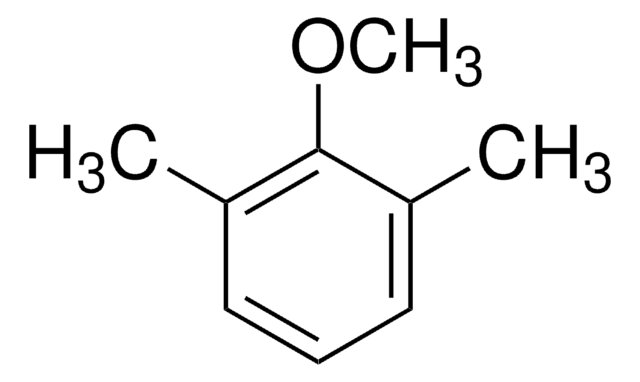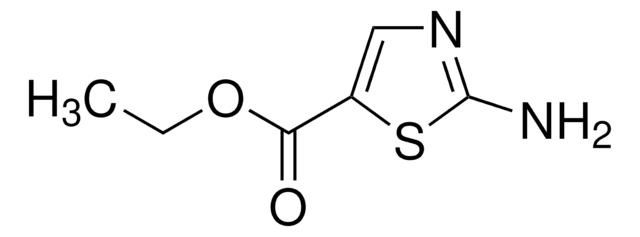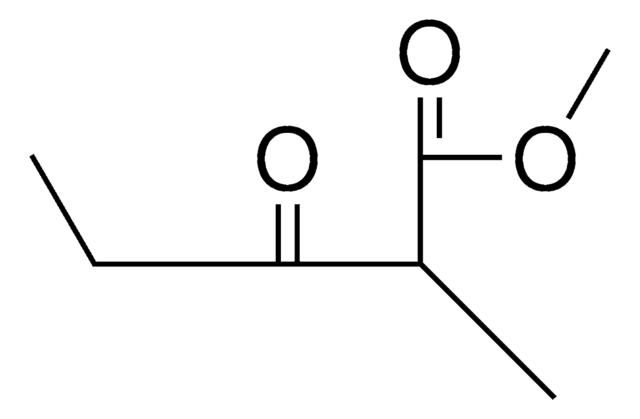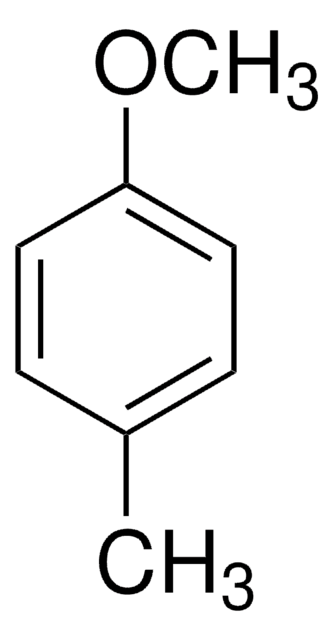137480
2,5-Dimethylanisole
99%
Autenticatiper visualizzare i prezzi riservati alla tua organizzazione & contrattuali
About This Item
Formula condensata:
(CH3)2C6H3OCH3
Numero CAS:
Peso molecolare:
136.19
Numero CE:
Numero MDL:
Codice UNSPSC:
12352100
ID PubChem:
NACRES:
NA.22
Prodotti consigliati
Livello qualitativo
Saggio
99%
Stato
liquid
Indice di rifrazione
n20/D 1.514 (lit.)
P. ebollizione
190 °C (lit.)
Densità
0.965 g/mL at 25 °C (lit.)
Stringa SMILE
COc1cc(C)ccc1C
InChI
1S/C9H12O/c1-7-4-5-8(2)9(6-7)10-3/h4-6H,1-3H3
SJZAUIVYZWPNAS-UHFFFAOYSA-N
Categorie correlate
Descrizione generale
2,5-Dimethylanisole acts as photoexcited donor and undergoes different non-radiative transitions in the presence of the acceptor 2-nitrofluorene in ethanol rigid glassy matrix at 77K.
Applicazioni
2,5-Dimethylanisole was used to investigate the temperature dependence of spin-rotational relaxation rate of methyl C-13 in 2, 5-dimethylaniline.
Codice della classe di stoccaggio
10 - Combustible liquids
Classe di pericolosità dell'acqua (WGK)
WGK 3
Scegli una delle versioni più recenti:
Possiedi già questo prodotto?
I documenti relativi ai prodotti acquistati recentemente sono disponibili nell’Archivio dei documenti.
C13 NMR Relaxation study of Internal Rotation of Methyl Groups-Spin-Rotational Relaxation of Methyl Carbon-13 in 2-bromo-p-xylene, 2, 5-dimethylanisole and 2, 5-dimethylaniline.
Lee JW, et al.
Bull. Korean Chem. Soc., 8(2), 73-79 (1987)
Investigations on the nature of non-radiative transitions from excited singlet and triplet states of dimethyl substituted phenols in the presence of acceptor 2-nitrofluorene at 77K.
Sinha S and Ganguly T.
Journal of Photochemistry and Photobiology A: Chemistry, 117(2), 83-90 (1998)
Ya-Nan Zhang et al.
Journal of hazardous materials, 358, 216-221 (2018-07-11)
Pharmaceuticals are a group of ubiquitous emerging pollutants, many of which have been shown to undergo efficient photolysis in the environment. Photochemically produced reactive intermediates (PPRIs) sensitized by the pharmaceuticals in sunlit natural waters may induce photodegradation of coexisting compounds.
Manabu Nakazono et al.
Clinica chimica acta; international journal of clinical chemistry, 436, 27-34 (2014-05-13)
Various styrylbenzene compounds were synthesized and evaluated as mainly Aβ amyloid sensors. These compounds, however, cannot be used for detecting amyloid deposition in peripheral nerves because of the inherent sensitivity of the compounds. These compounds often generate false positives especially
Il team dei nostri ricercatori vanta grande esperienza in tutte le aree della ricerca quali Life Science, scienza dei materiali, sintesi chimica, cromatografia, discipline analitiche, ecc..
Contatta l'Assistenza Tecnica.








